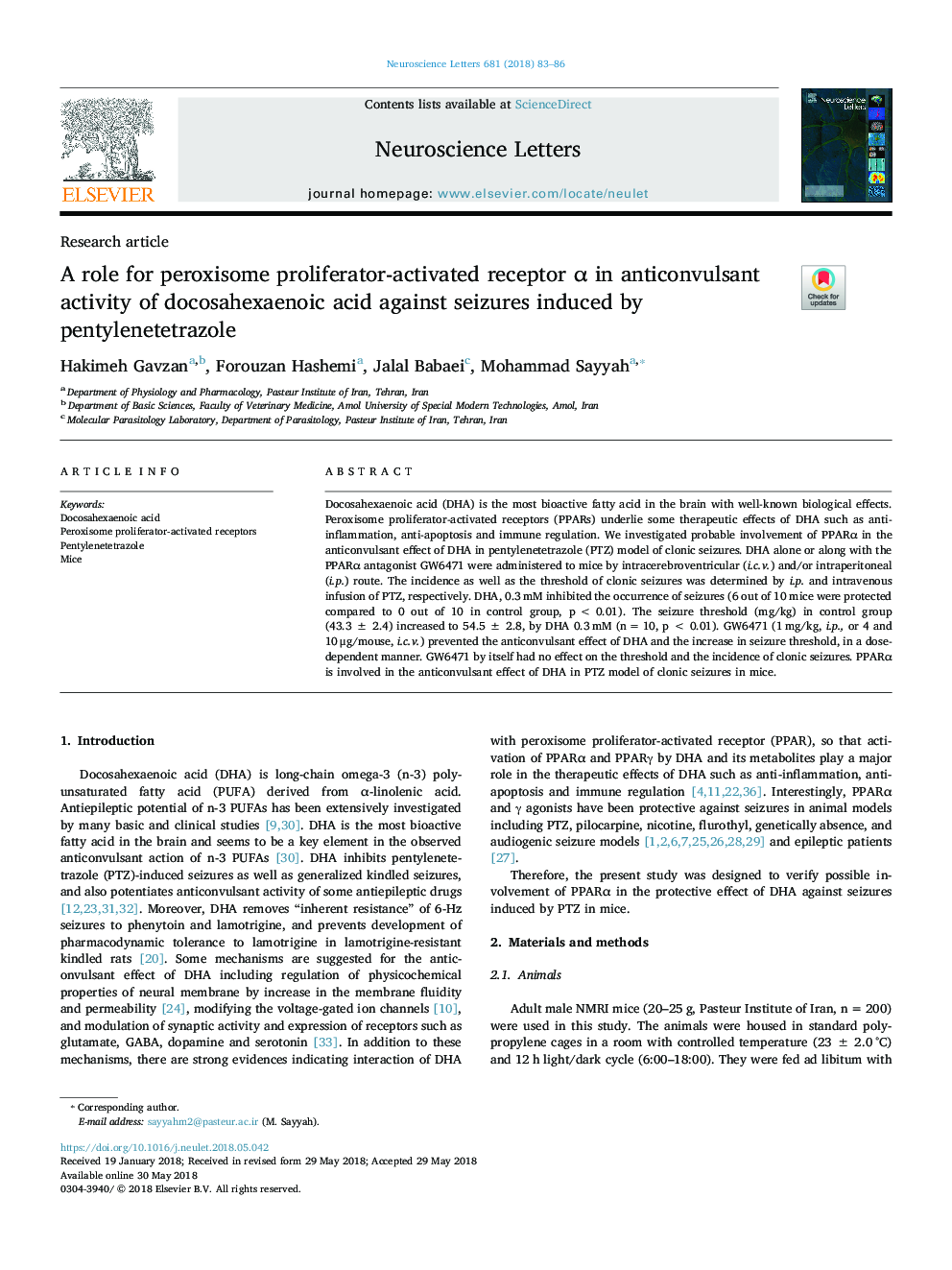| Article ID | Journal | Published Year | Pages | File Type |
|---|---|---|---|---|
| 8841431 | Neuroscience Letters | 2018 | 4 Pages |
Abstract
Docosahexaenoic acid (DHA) is the most bioactive fatty acid in the brain with well-known biological effects. Peroxisome proliferator-activated receptors (PPARs) underlie some therapeutic effects of DHA such as anti-inflammation, anti-apoptosis and immune regulation. We investigated probable involvement of PPARα in the anticonvulsant effect of DHA in pentylenetetrazole (PTZ) model of clonic seizures. DHA alone or along with the PPARα antagonist GW6471 were administered to mice by intracerebroventricular (i.c.v.) and/or intraperitoneal (i.p.) route. The incidence as well as the threshold of clonic seizures was determined by i.p. and intravenous infusion of PTZ, respectively. DHA, 0.3â¯mM inhibited the occurrence of seizures (6 out of 10 mice were protected compared to 0 out of 10 in control group, pâ¯<â¯0.01). The seizure threshold (mg/kg) in control group (43.3â¯Â±â¯2.4) increased to 54.5â¯Â±â¯2.8, by DHA 0.3â¯mM (nâ¯=â¯10, pâ¯<â¯0.01). GW6471 (1â¯mg/kg, i.p., or 4 and 10â¯Î¼g/mouse, i.c.v.) prevented the anticonvulsant effect of DHA and the increase in seizure threshold, in a dose-dependent manner. GW6471 by itself had no effect on the threshold and the incidence of clonic seizures. PPARα is involved in the anticonvulsant effect of DHA in PTZ model of clonic seizures in mice.
Related Topics
Life Sciences
Neuroscience
Neuroscience (General)
Authors
Hakimeh Gavzan, Forouzan Hashemi, Jalal Babaei, Mohammad Sayyah,
